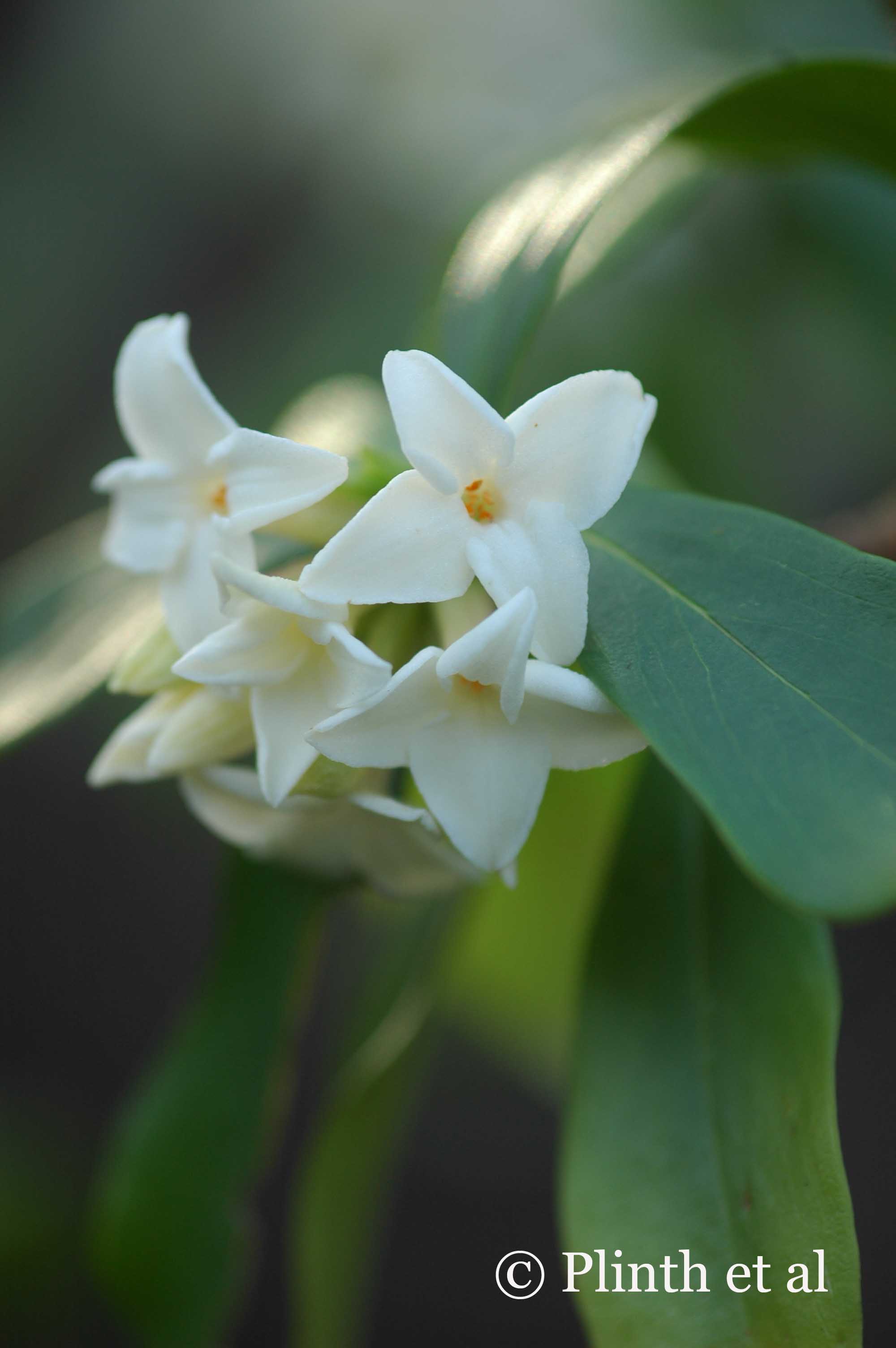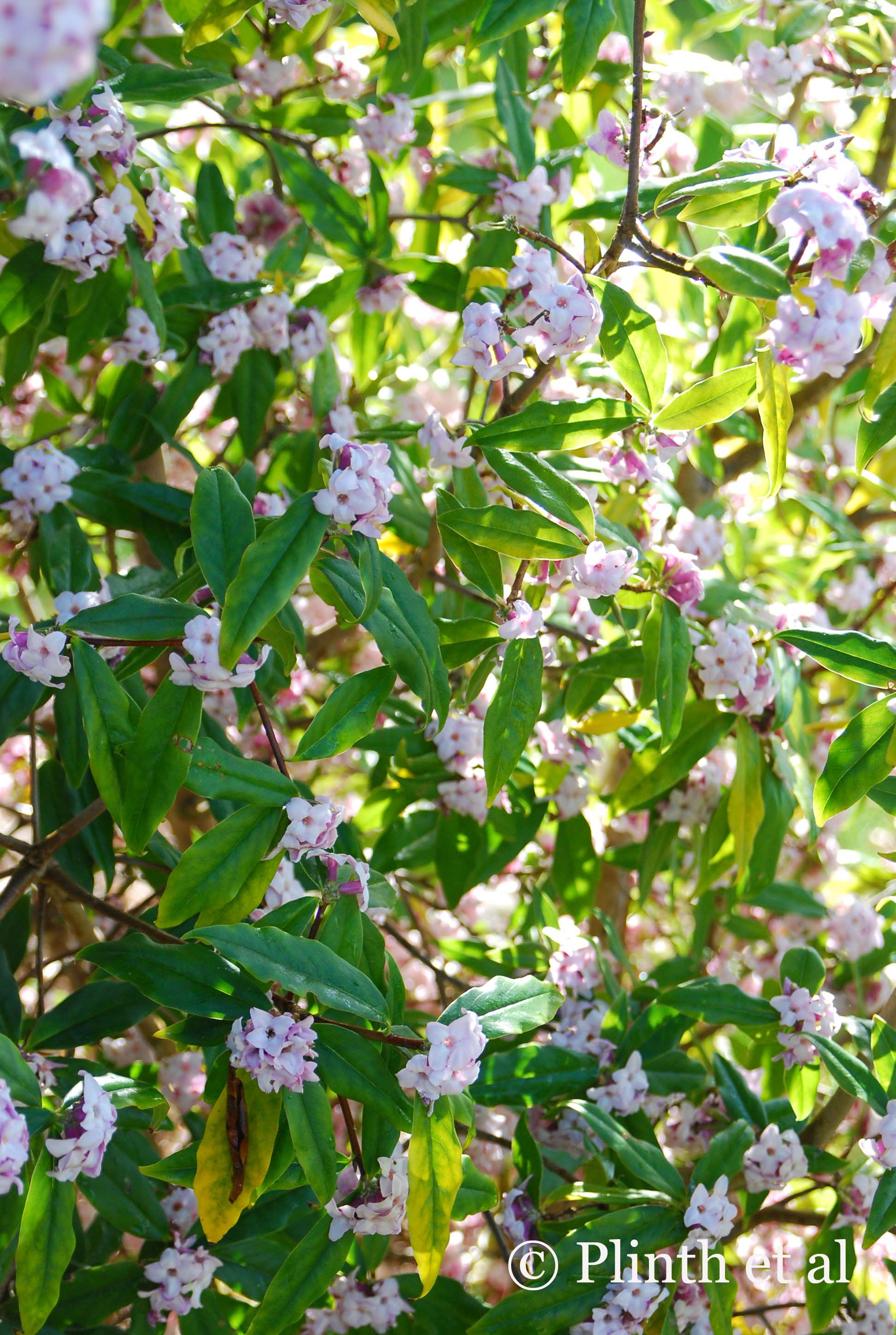Winter Flowers: Daphne
As the Chinese New Year (Year of the Horse) approaches at the end of January, my thoughts turn to the traditional container plants, like Prunus mume and citrus, which herald this auspicious holiday. Where winters are mild, daphnes coincide with Chinese New Year when they perfume the garden courtyards. They are usually Daphne odora, a species with a long history of cultivation.
The Chinese once valued Daphne odora as a pot plant for its fragrance as well as planting it in their gardens. In Garden Plants of China (1999), Peter Valder cites a story of a sleeping monk who dreamed of a memorable fragrance and upon waking, sought and found the source of the scent, a plant he named Shuixiang (Sleeping Scent). Like other garden plants, Daphne odora was probably introduced to Japan from China. Several variegated varieties, such as Daphne odora 'Maejima', are valued by the Japanese. Taking their cue from east Asia and certainly seduced by the daphne's scent, the Victorians grew this species in the conservatories and hothouses in the 19th century.
The gawky habit of Daphne odora resists pruning since lateral growths are rarely produced unless drastically cut closer and on mature wood. Complicating matters is the production of flowers in terminal inflorescences. My inclination is to let the plant mature more and then re-evaluate pruning, and in the meantime, one has to overlook the sparse branching. Viruses do plague Daphne odora - yellowing or dying foliage and stunted growth are telltale symptoms. Tissue culture has done much to reduce the incidence of viruses as older stock propagated by cuttings became contaminated over time.
Daphne bholua is a familiar, welcome sight in Europe and Australia during winter when its starry flowers purple in bud and pink-blushed fully open wafted its intoxicating fragrance. Pronounced 'bo-lua', bholua takes its origin from the Nepalese name bhulu-swa. It is found in forests between 7,000 and 11,000 ft (2000 to 3350 m) in mountainous regions of Nepal and Bhutan. Plants at lower elevations tend to be more evergreen than those higher above that are semi-evergreen to deciduous, and selections from the latter will be clearly harder. Sadly for those in colder climates, Daphne bholua is more tender than Daphne odora, requiring frost protection as young plants and preferring sheltered sites for success. Seed-grown plants are slow to flower, but grafted or tissue-cultured plants will flower young. The habit of D. bholua is taller and fuller than that of D. odora, therefore formative pruning is less of an issue.
Both daphnes make excellent cut flowers that emanate their fragrance in a warm room. Inside their fragrance may be too overpowering for some noses, but they chase away the winter blues, reminding us that the cold months are not without its floral interests.










